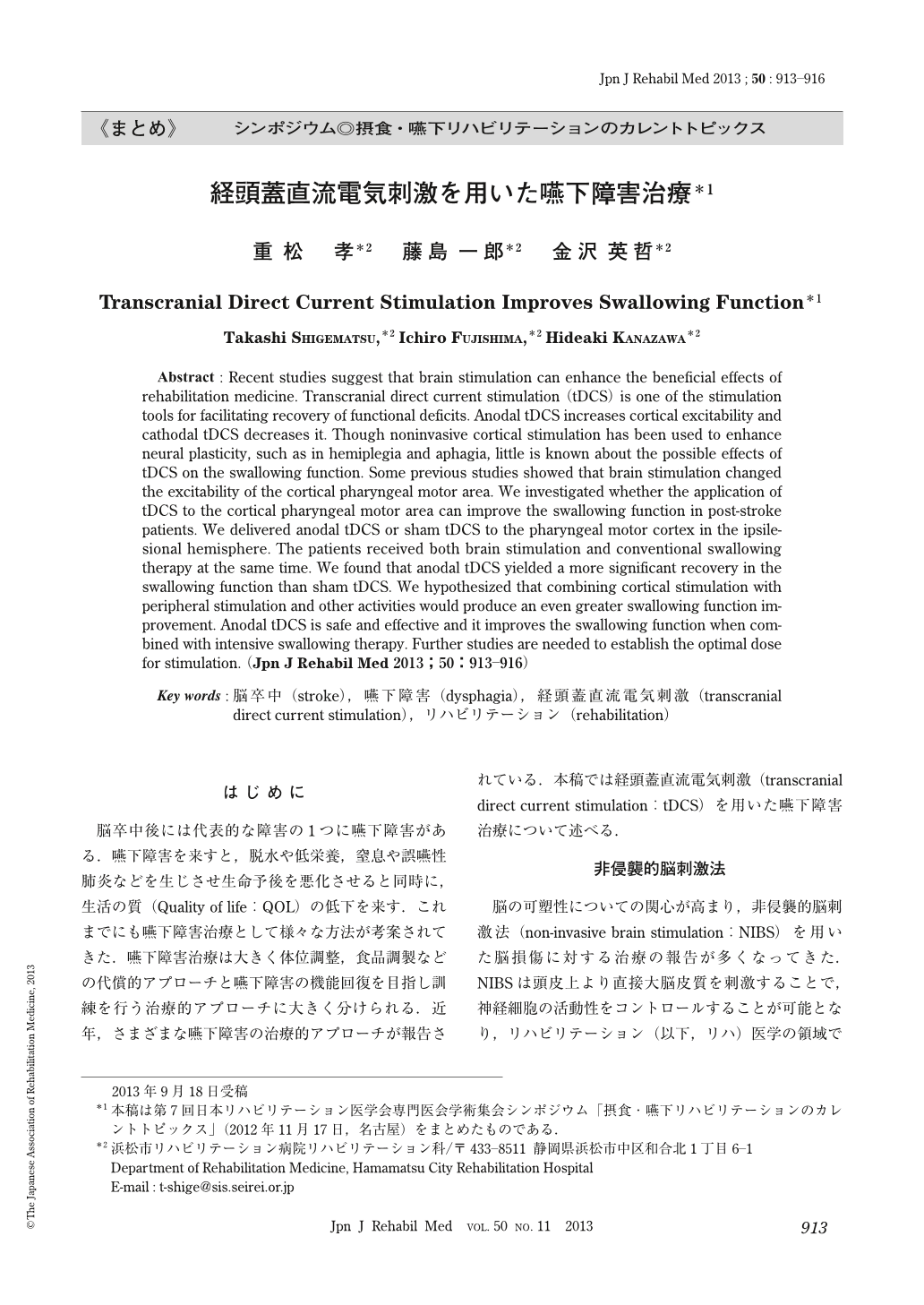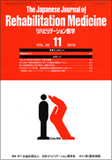Japanese
English
- 販売していません
- Abstract 文献概要
- 1ページ目 Look Inside
- 参考文献 Reference
はじめに
脳卒中後には代表的な障害の1つに嚥下障害がある.嚥下障害を来すと,脱水や低栄養,窒息や誤嚥性肺炎などを生じさせ生命予後を悪化させると同時に,生活の質(Quality of life:QOL)の低下を来す.これまでにも嚥下障害治療として様々な方法が考案されてきた.嚥下障害治療は大きく体位調整,食品調製などの代償的アプローチと嚥下障害の機能回復を目指し訓練を行う治療的アプローチに大きく分けられる.近年,さまざまな嚥下障害の治療的アプローチが報告されている.本稿では経頭蓋直流電気刺激(transcranial direct current stimulation:tDCS)を用いた嚥下障害治療について述べる.
Abstract : Recent studies suggest that brain stimulation can enhance the beneficial effects of rehabilitation medicine. Transcranial direct current stimulation (tDCS) is one of the stimulation tools for facilitating recovery of functional deficits. Anodal tDCS increases cortical excitability and cathodal tDCS decreases it. Though noninvasive cortical stimulation has been used to enhance neural plasticity, such as in hemiplegia and aphagia, little is known about the possible effects of tDCS on the swallowing function. Some previous studies showed that brain stimulation changed the excitability of the cortical pharyngeal motor area. We investigated whether the application of tDCS to the cortical pharyngeal motor area can improve the swallowing function in post-stroke patients. We delivered anodal tDCS or sham tDCS to the pharyngeal motor cortex in the ipsilesional hemisphere. The patients received both brain stimulation and conventional swallowing therapy at the same time. We found that anodal tDCS yielded a more significant recovery in the swallowing function than sham tDCS. We hypothesized that combining cortical stimulation with peripheral stimulation and other activities would produce an even greater swallowing function improvement. Anodal tDCS is safe and effective and it improves the swallowing function when combined with intensive swallowing therapy. Further studies are needed to establish the optimal dose for stimulation.

Copyright © 2013, The Japanese Association of Rehabilitation Medicine. All rights reserved.


